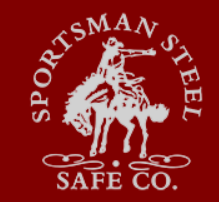Weapons don’t get into the hands of criminals because they are kept in a safe place, and there is less risk of theft. People in some states and communities may have to keep their guns in a safe place, use trigger locks, or use a cable to keep them safe.
Having a weapon safe has been around for a very long time. These days, they can be used in many ways and are easy to open, but they are durable enough to keep burglars away. The best gun safe for your home will depend on the guns you want to keep safe.
Remember these things when you choose the best gun for safety.
Also, a gun safe must be big enough to hold all the guns, extra clips, and cartridges that you might need. In an emergency, it should be easy to get to but safe to be there.
For gun safes, there are a lot of different features, performance levels, and levels of security that can be chosen from. When you’re shopping, keep these things in mind.

Capacity/dimensions
They come in a wide range of sizes, from small portable safes that can hold one pistol or derringer to large, heavy floor-style safes that can hold many long guns, weapons, and other extras.
Size is important when putting a safe in a certain place, like a closet cubby. You should check with your local police department before buying a gun safe to see if you need a certain kind.
Some locking mechanisms of gun safe
A biometric, mechanical, or combination lock is usually used on a gun safe, but other types of locks are also used. Each option has both good and bad things about it.
If you have a biometric lock, it stores your fingerprints so that only you can unlock the safe. When the user puts their finger on the biometric pad, the safe opens the door. Biometric locks are safe because each person has a unique fingerprint. To open the lock, the finger must be clean.
When users want to open an electronic lock, they must type in a three or eight-digit combination on a digital keypad. If a person wants to change their key code with an electronic lock, they can do so.
Batteries run electronic locks, such as biometric locks. Before anyone can use the keypad, they must first change the batteries.
Combination locks can be used to keep things safe. This is a good way to think about how a combination lock works: think about your high school lockers.
Users turn a dial or align the numbers on a vertical-type combination lock opening the safe. They can do this to get in with a three- to five-digit combination code.
The keys to only a few gun safes are out there. Many times, a person forgets their code or combination and needs to use a key as a last resort. This means that if the owner does not have the backup keys, they’ll need a locksmith to open the safe.
To find the best gun safe, pay attention to both the safe’s outside and inside dimensions.
Fire safety assessment of gun safe
It takes a while to make sure the temperature inside a fire-rated gun safe doesn’t get too hot. It means the safe’s contents are safe from fire damage for that long.
Intensity of Défense
In terms of fire ratings and locking mechanisms, thicker steel will make them stronger and safer (8 to 12-gauge is best). It is easy to figure out how well a gun safe protects your guns by looking at the following categories.
This is also important to make sure that the homeowner’s insurance policy will cover any guns kept in the home. You should find out from your insurance company how safe your weapons investment will be before buying them.
One or more of the scores below is called a “UL score.” UL stands for “Underwriters Laboratories.”
TL-15: This means that the safe can be prised open for 15 or 30 minutes, with a pry bar or other tool, before it breaks. Underwriters Laboratories gave the 15-minute tool resistance rating, shown by the UL designation (for instance, UL TL-15).
UL TRTL-30, for example, says that a safe with the TR designation can be paired with the TL designation for an extra 30 minutes of resistance to being forced open with a torch.
The front and all four sides, the top, and the bottom, if the designation has the letter X6, have been looked at. If you get the safe’s UL TRTL-15-X60 rating, it can stand up to a 15-minute torch or prying tool attack on all six of its sides.
An RSC (Residential Security Container)-rated gun safe may keep some burglars away, but it is the least safe. An insurance plan may not cover safes with RSC ratings but any TL ratings. This is the least-reliable RSC gun safe. It can keep its contents safe from prying for only five minutes.
There are many ways to defend yourself.
Some gun safes have mounting holes to be attached to wall studs, floor joists, or concrete. They also have heavy-gauge steel, a strong lock, and fire protection. Some more modern safes also have alarms that sound if someone tries to open the safe without permission.
On the other hand, other safes keep track of and record every time someone tries to open the safe.
Adaptability
People who need to move their guns can buy portable gun safes. Many gun safes can be fixed on the floor or the wall. Steel cables can be used to keep a car’s non-moving parts, like the trunk, from being stolen.
There are small, non-sticky safes hidden under a car seat or a desk drawer. You can buy them. In these safes, kids can’t get in. However, a determined thief won’t be stopped by these safes.
